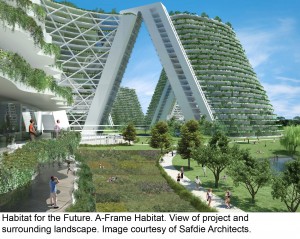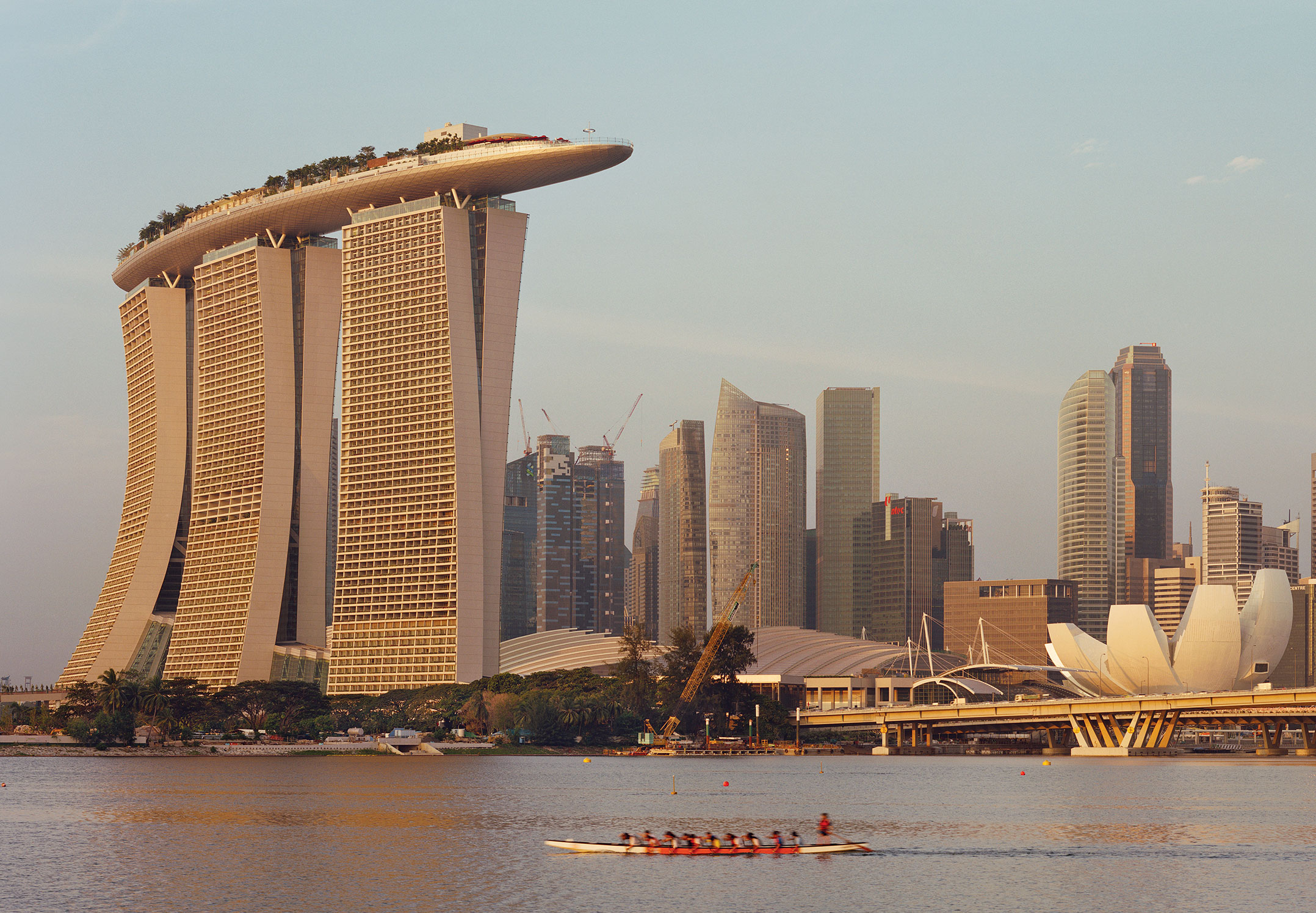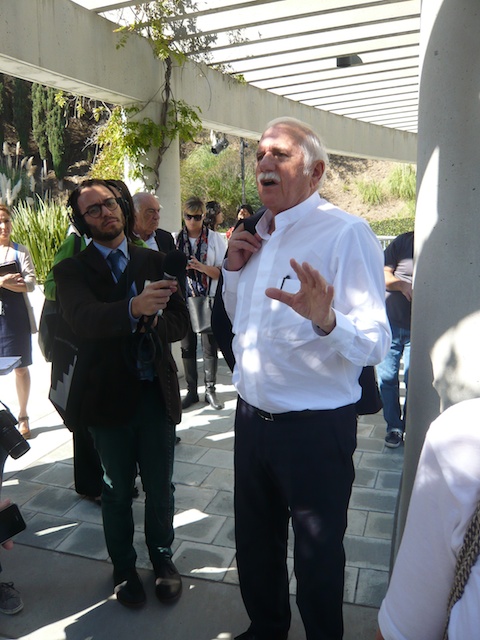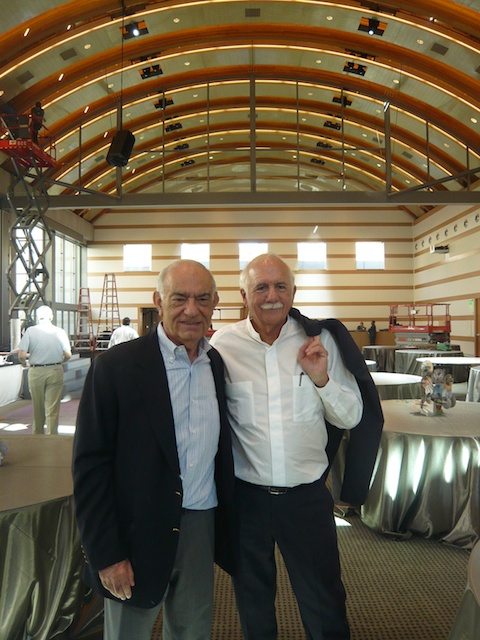A Retrospective of the Architect Coincides with Opening of New Buildings on Skirball Campus
Does Architecture appeal to anyone in your family? If so, the Skirball Center’s new show is worth adding to your fall agenda. Global Citizen: The Architecture of Moshe Safdie opens today and surveys the career of Moshe Safdie, who has been working for twenty years to design and build a thriving civic center from a piece of land in Sepulveda Pass that was once a garbage dump. Herscher Hall and Guerin Pavilion, the latest buildings on the tidy Skirball campus, are designed to serve as a learning and conference facility. These newly constructed buildings mark the completion of the Skirball’s fifteen-acre campus, fulfilling a thirty-year partnership between Safdie Architects and the Skirball Cultural Center. The show, which takes up nearly every exhibition hall at the museum, honors the famed architect’s career.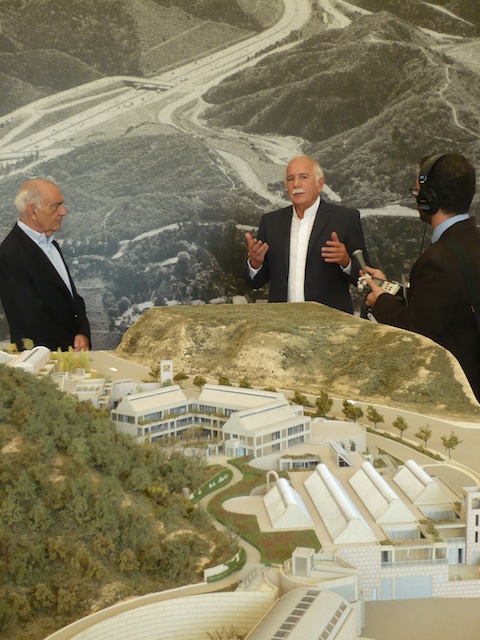 The architect himself is seen here with Uri D. Herscher, Skirball Founding President and CEO, and a model of the now complete campus of the Skirball Center. We were able to hear the men talk about their lifelong friendship and collaboration, the result of which is LA’s most welcoming and personal museum. The show is fascinating, and we recommend it – as well as a tour of the buildings themselves – for the chance to learn about an architect whose career seems to be getting bigger and bigger with each passing year, both in the US and around the globe.
The architect himself is seen here with Uri D. Herscher, Skirball Founding President and CEO, and a model of the now complete campus of the Skirball Center. We were able to hear the men talk about their lifelong friendship and collaboration, the result of which is LA’s most welcoming and personal museum. The show is fascinating, and we recommend it – as well as a tour of the buildings themselves – for the chance to learn about an architect whose career seems to be getting bigger and bigger with each passing year, both in the US and around the globe.
In the words of the exhibit’s curator, Donald Albrecht:
“Through his buildings, Moshe Safdie has been especially adept at realizing the aspirations of a surprisingly diverse group of clients. He has created buildings where communities are forged of strangers, memory is enshrined, and identity is created in built form.”
The exhibit begins and ends with Safdie’s early module apartment concept, Habitat ’67, created for the Montreal Expo and considered a landmark of housing design, modern architecture, and city planning. The exhibit’s curators asked Safdie to revisit the concepts explored in Habitat, providing a conceptual look at the future as the end point of the exhibit.
In fact, Safdie’s most recent commissions have produced buildings that are intriguingly futuristic.
Much of Safdie’s latest work inspires “oohs and ah’s” from the viewers — most of these buildings are located in faraway spots such as Singapore and the Middle East, but seeing their exquisite models are impressive enough to inspire a journey to visit the buildings themselves.
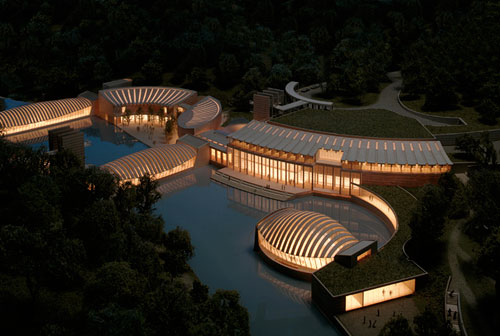
In fact, we recently visited Safdie’s critically acclaimed Crystal Bridges — an American art museum in Bentonville, Arkansas — and fell in love with his sumptuous forms and generous spaces for art and people. In lieu of a trip to see these futuristic forms, architecture fans can be satisfied with a cruise around the Skirball’s campus, admiring the way the buildings nestle into the hill and learning from this well-designed exhibit about Safdie’s prodigious career.
Here Safdie tells us about the poured concrete with which he built the Skirball, and which after ten years still looks sleek and new. In the new pavilion, pictured below, he describes the challenges of building a multi-purpose space in a hillside, and how he managed to bring natural light to the space.
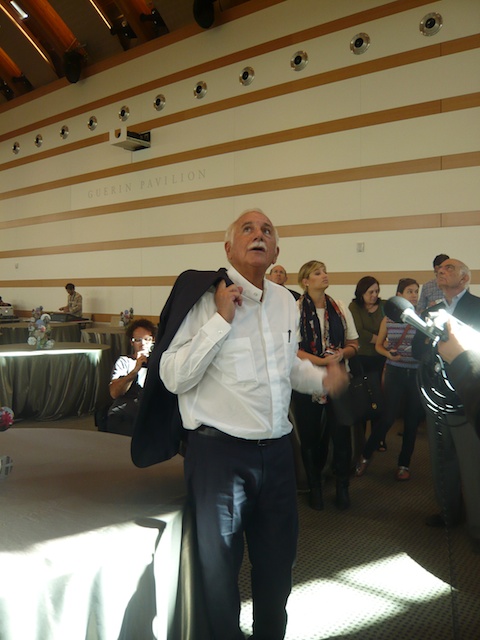
What a gift these two men have given Angelenos. Click here for the Skirball Museum Director’s take on this relationship and on why Safdie is relevant today – you can also read a TED talk by Safdie through this link.

